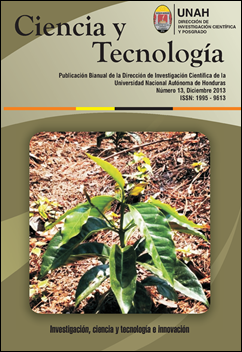Traditional knowledge of fungi in western Honduras
DOI:
https://doi.org/10.5377/rct.v0i13.1710Keywords:
fungi toxins, etno-mycology, fungi diversity, eatable fungiAbstract
The fungi are the eukaryotic living organisms which are most diverse and abundant in the planet, after the insects. Besides their diversity, the fungi are relevant for their cultural utilization in the whole world. This study had the intention to rescue and validate the traditional practices brought from the uses and forms of utilization of the fungi by the inhabitants of the communities located in the west of Honduras. The method of participant observation was used, and it included direct observation, surveys, interviews, statements of life to determine the ecology, identification of the toxic and eatable species, forms of preparation, forms of preservation, distribution, abundance and other uses, origin, morphology, distribution and transmission of knowledge; to conclude the study with the zone's fungi taxonomy based upon classic and molecular methods. For the first time, this study describes the species of most used fungi in the west of Honduras, and the knowledge the communities possess in this matter.
DOI: http://dx.doi.org/10.5377/rct.v0i13.1710
Revista Ciencia y Tecnología, No. 13, diciembre 2013: 19-29
Downloads
3018
Downloads
Published
How to Cite
Issue
Section
License
© Revista Ciencia y Tecnología
Authors who publish in this journal accept the following conditions: In accordance with the legislation of copyright, Revista Ciencia y Tecnología, recognizes and respects the moral right of authors, as well as the ownership of the patrimonial right, which will be ceded to the magazine for its diffusion in open access in printed version and in digital format. By being part of multiple indexers, databases and reference systems, the articles published by Revista Ciencia y Tecnología will be visible and will be downloaded from these websites, indicating, in all cases, the authorship of the articles, the date of publication and the number of the journal to which they correspond.




